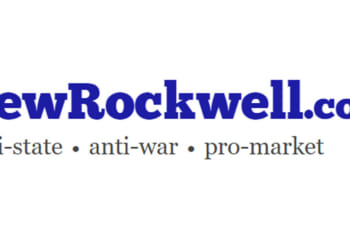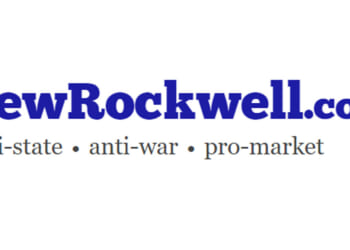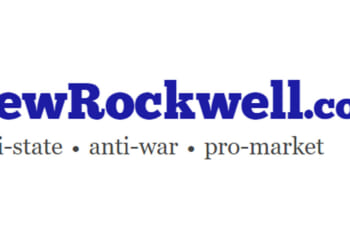During the runup to the 1992 presidential election, Hewlett-Packard (HP) co-founder David Packard publicly derided the Democratic Party as the “party of socialism.” Yet in 2020, nearly a quarter-century after Packard’s passing, the foundation spending his fortune committed $20 million to a nonprofit fund that promotes “an anti-capitalist politic.”
This is not the only recent example of the David and Lucile Packard Foundation making major grants to promoters of left-wing socioeconomic policies. That said, the full picture of the Packard Foundation’s grantmaking is more complicated. It reflects a combination of causes that David Packard would have doubtless supported, alongside others about which he may have had reservations, or outright opposed.
Background
***
Packard was a longtime board member at both AEI and the Hoover Institution, two venerable conservative think tanks to which he was also a major donor.
***
With $8 billion in net assets, the Packard Foundation is now one of Big Philanthropy’s bigger philanthropies. It was established in 1964 by David Packard and his wife Lucile. Bill Hewlett, the other half of Hewlett-Packard’s founding duo, set up the William and Flora Hewlett Foundation two years later in 1966. As of 2023, the two foundations had combined net assets of $21 billion, with Hewlett accounting for approximately 62 percent of that total. As recently as 2003, however, the Packard Foundation was the larger of the two.
David Packard did not place any firm restrictions on his foundation’s grantmaking, though he made his personal philanthropic interests reasonably clear during his life. These notably included environmental conservation and higher education—particularly at his alma mater of Stanford University. Science and the arts were also priorities, but so was the much more controversial goal of curtailing the global human population. In a letter he reportedly wrote to his children during the 1980s entitled “Some Random Thoughts About the Packard Foundation,” which has never been made public, Packard was said to have singled out population control as the issue which he felt should be the foundation’s “highest priority.” A New York Times profile written shortly after his death in 1996 said that David Packard “had an engineer’s interest in the sciences, as well as an outdoorsman’s interest in conservation and a humanist’s interest in education,” while Lucile “leaned more toward programs to help children, the sick and the poor.”
Packard was a Republican—he served as deputy secretary of defense in the Nixon Administration and was a major supporter of Gerald Ford, even serving for a time as the latter’s 1976 campaign finance committee chair. During the Reagan Administration he chaired the so-called Packard Commission, created to study administration and procurement within the Department of Defense. Longtime American Enterprise Institute (AEI) president Chris DeMuth described Packard’s politics as “a little hard to characterize…one should think of him as a conservative in California Goldwater way—libertarian rather than social conservative. He was not a highly political person, but was an engineer and a businessman first.”
Packard was a longtime board member at both AEI and the Hoover Institution, two venerable conservative think tanks to which he was also a major donor. He has been credited with personally saving AEI from dire financial straits in 1986, putting up half of the $1.8 million necessary to keep the organization solvent while it undertook what would ultimately prove to be a successful turnaround. According to a 1998 Wall Street Journal profile, even after Packard agreed to conduct his philanthropy through the Packard Foundation at the request of his three daughters (who sat on the foundation’s board and disapproved of his Republican politics), he “quietly wrote personal checks to Stanford University’s conservative Hoover Institution, hoping his daughters wouldn’t find out.”
Indeed, Packard was an ardent supporter of free enterprise, with the Philanthropy Roundtable describing him as “a firm believer in the power of free markets to enrich society as a whole.” In a 1973 speech to the Scientific Apparatus Makers Association, he lauded free-market capitalism for having “produced more benefits for more people than any other economic system. I do not believe a better economic system can be devised.”
Packard warned, however, that it was increasingly coming under attack from those
“who sincerely believe the government should have a larger role in managing the economy—people who sincerely believe socialism is preferable to private free enterprise.” Packard spoke of members of Congress “who do not believe that equality of opportunity is enough. They believe that all people should be assured equality of results—that the wealth of this nation should be spread equally among its citizens.” He feared that unless such arguments were successfully countered, future generations would fail to inherit the prosperity that American free enterprise had engendered.
In 2023, the Packard Foundation reported net assets of $8 billion, with its endowment invested across a diversified range of public and private equities, marketable alternatives, and real assets—a sophisticated portfolio typical of a very large private foundation.
This was not always the case. According to George Anders—as told in the book How Great Philanthropists Failed by the late Capital Research Center senior fellow Martin Morse Wooster—David Packard had left specific instructions not to diversity the foundation’s investments. Instead, his intent was for it simply to remain invested in HP stock.
By the time Packard died in 1996, his foundation already held almost 25 million shares in HP. He willed most of his estate—more than 46 million additional shares—to the foundation upon his death. The New York Times reported at the time that this made the Packard Foundation the company’s largest shareholder, holding just over 13 percent of all outstanding shares. As of May 1996, its stake in HP was valued at over $7.2 billion (nearly $15 billion in 2025 dollars)—one of the largest philanthropies in the world at that time.
This investment concentration worked just fine, so long as HP stock performed well. But it became problematic during the tumultuous aftermath of the late 1990s internet-driven stock market bubble, and HP’s controversial acquisition of Compaq in 2002. In 2001 the foundation reported total net assets of $9.37 billion at the start of the year, and $5.6 billion at the end. A September 2002 article in the Los Angeles Times reported that the foundation’s endowment had dropped from $15 billion to $3.8 billion in barely two years, and that it had been forced to substantially reduce both its staff and grantmaking.
The Packard Foundation’s board voted to diversify its endowment in 2003, and it hired a chief investment officer to “build out an institutional-quality portfolio” in 2007. In 2023, it made $367 million worth of grants. That year, the foundation paid its chief investment officer Kimberly Sargent more than $3.1 million in compensation, well over three times what it paid its president and CEO. The considerably larger Hewlett Foundation, which made over $590 million in grants that year, paid its own chief investment officer more than $5.4 million.
Current activities
***
Some of its largest current grantees remain those championed by David and Lucile during their lives.
***
Today, the Packard Foundation’s vision is “a just and equitable world where both people and nature flourish,” and it argues that “only when systems are fair and inclusive can we find and sustain solutions to the biggest challenges today and into the future.” The foundation emphasizes diversity, equity, and inclusion (DEI) in all of its activities, and has committed to producing net-zero carbon emissions from its operations by 2040.
Nancy Lindborg is the foundation’s president and CEO. She previously served in that same capacity at the United States Institute for Peace, and before that was an assistant administrator at USAID during the Obama Administration. Lindborg was also formerly the president of Mercy Corps. The Packard Foundation’s board chair is Jason Burnett, a grandson of David and Lucile and one of several Packard family members currently serving as trustees. Burnett is CEO of the emissions tracking company Crosswalk Labs and was formerly the mayor of Carmel-by-the-Sea, California.
The Packard Foundation’s website features a detailed database of grants awarded since 2022, and all following numbers reflect database totals as of mid-November 2025. Some of its largest current grantees remain those championed by David and Lucile during their lives. Since 2022, the foundation has given more than $100 million to the Lucile Packard Foundation for Children’s Health, which in turn supports the Lucile Packard Children’s Hospital and the Stanford University School of Medicine. The children’s hospital, which opened in 1991, was originally established with a $70 million gift from the Packards in 1986 and was of great personal importance to Lucile.
By far the Packard Foundation’s largest grantee since 2022 has been the Monterey Bay Aquarium Research Institute, to which it has awarded $238.6 million. An additional $71.2 million was awarded to the aquarium itself through the associated Monterey Bay Aquarium Foundation. David Packard was deeply involved with planning and financing both the aquarium (which opened in 1984) and the research institute (which he founded in 1987). According to Wooster, it was the single largest philanthropic project Packard undertook during his life. His daughter Julie Packard remains the aquarium’s executive director to this day, in addition to her role as vice chair of the Packard Foundation’s board of trustees. The aquarium attracts approximately two million visitors annually.
Prominent universities also receive substantial funding from the Packard Foundation. Since 2022, the largest recipients have been Johns Hopkins University ($7.7 million), Stanford University ($7.3 million), the University of California, Berkeley ($6.6 million), and the University of Pennsylvania ($4.8 million). Much of the foundation’s higher education grantmaking—but by no means all of it—is connected to the Packard Fellowships for Science and Engineering program, which makes 20 awards of $875,000 annually to support the research of “the nation’s most promising early-career scientists and engineers.” The program arose from David Packard’s personal interest in these fields, and the foundation has awarded more than $500 million through it since 1988.
Abortion grants
***
Ipas works to build what it calls a “sustainable abortion ecosystem” in countries where it operates.
***
Though a lifelong Republican, some of David Packard’s views were atypical of what today would be considered broadly conservative. One prominent example is abortion, which Packard considered a necessary mechanism for global population control. Abortion has accordingly remained a core focus for the Packard Foundation, which evidently sees no contradiction with its professed priority of ensuring that “moms, expectant parents, and children have the support they need to be healthy and thrive.” The foundation did, however, delete the word “population” from what had until 2020 been known as its Population and Reproductive Health program, because it felt it invoked “colonialist or authoritarian connotations.”
The Packard Foundation played an important role in making the abortion drug mifepristone available in the United States by extending a $10 million loan to Danco Laboratories, so that that company could market the drug after receiving FDA approval in 2000. The foundation has since worked to make the drug cheaper and more widely available, characterizing it as part of the basis for “a just and equitable society.”
Packard makes substantial grants to a wide variety of groups working to expand abortion access both domestically and internationally. From 2023-2025, it awarded $15 million to the Collaborative for Gender + Reproductive Equity, a fiscally sponsored project of Rockefeller Philanthropy Advisors. The collaborative’s purpose is to fund groups that are “pioneering new approaches across issue silos to defend gender, reproductive, and racial equity.” Abortion is a central priority for the collaborative, which it attempts to connect to other identity politics-driven issues through supporting public policy activism, litigation, and leadership/organizational development. In 2018, the Packard Foundation committed $50 million in seed money for the collaborative, which has since been joined by the Ford Foundation, the Hewlett Foundation, the Freedom Together Foundation, and more.
Packard awarded more than $11.5 million to Ipas from 2023-2025, to help expand access to abortion globally—particularly in South Asia and Sub-Saharan Africa. Ipas works to build what it calls a “sustainable abortion ecosystem” in countries where it operates. This includes building political support, de-stigmatizing abortion in local cultures, and ensuring that abortion providers are supplied and financed. Ultimately, Ipas aims for universal abortion access. In 2024, more than 640,000 women worldwide received “abortion care” at an Ipas-supported facility.
Another $4.45 million from 2022-2025 was awarded for similar purposes to MSI United States, an affiliate of MSI Reproductive Choices. MSI was previously known as Marie Stopes International, but changed its name in 2020 because Marie Stopes (the person) had during her life “expressed many opinions which are in stark contrast to MSI’s core values and principles”—the most glaring of which being her support for eugenics and sterilization.
Of the $12.2 million that Packard awarded to the Arabella Advisors-managed[*] Hopewell Fund from 2022-2025, just less than half was earmarked for its Galvanize USA project, which works to persuade women to support left-of-center positions on divisive sociopolitical issues, including (but not limited to) abortion. Galvanize USA’s founder and executive director is Jackie Payne, who formerly served as director of government relations for the Planned Parenthood Federation of America—a group which has also received $6.1 million from Packard since 2022, plus millions more for its local branches. Another $1.5 million to the Hopewell Fund was designated for the Resources for Abortion Delivery project, which directly funds abortion providers.
The activist group All Above All has received $800,000 from Packard since 2022, including grants made while it was housed as a project of the New Venture Fund. All Above All supports totally unrestricted—indeed, actively incentivized—abortion through policies such as mandatory insurance coverage (including for illegal immigrants), requiring public universities to make free abortion available to students, eliminating legal restrictions on youth abortions, repealing fetal personhood laws, and generally abolishing “any state level abortion bans or restrictions.”
Environmental grants
***
Packard awarded $4.23 million to the Greenpeace Fund . . . one of three affiliated Greenpeace entities which in 2025 were found civilly liable for a combined $667 million (later reduced to $345 million) for their role in the sometimes-destructive Dakota Access Pipeline protests …
***
Another personal philanthropic interest for David Packard was the natural environment, though Wooster noted that “much about his views on the environment remains unknown” and may well have been tied (at least partially) to his concerns about the global population. He was certainly a dedicated conservationist, and during his life also expressed concerns about climate change. In addition to its significant support for the Monterey Bay Aquarium, the Packard Foundation currently supports a wide range of environmental groups and funding intermediaries—several of which are among its very largest grantees.
From 2022-2025, the foundation made $51.6 million in grants to the ClimateWorks Foundation. More than half of this was earmarked for the Climate and Land Use Alliance, a philanthropic collaborative focused on protecting global tropical forests, primarily in Central and South America, and Indonesia. The Climate and Land Use Alliance believes that “disrupting existing power structures and supporting diverse leaders and inclusive movements can boldly move us toward a just and climate-resilient world.” It makes grants to “support those working to change the systems and power structures that drive tropical deforestation and undermine people’s rights and well-being.”
Another $38.9 million from 2022-2024 was granted to Climate Breakthrough, itself a grantmaker that funds the work of those pursuing the “boldest new initiatives for large-scale policy, economic, and social transformation to address the climate crisis.” Past awardees have included Bruce Nilles, currently vice president of Climate Imperative and formerly managing director at the Rocky Mountain Institute, head of the Sierra Club’s Beyond Coal campaign, and staff attorney at Earthjustice. Former Emerald Cities Collaborative president and CEO Denise Fairchild received an award in 2021, while Bold Alliance founder and executive director (and Nebraska Democratic Party chair) Jane Kleeb received one in 2023.
The Packard Foundation awarded nearly $28 million from 2023-2025 to RF Catalytic Capital, a Rockefeller Foundation spinoff that helps foundations, governments, and other funders coordinate and combine their support for joint projects. Nearly all of Packard’s grants were earmarked for a project called Invest in Our Future, a collaborative aimed at “accelerating America’s clean energy economy.” Other Invest in Our Future partners include the Hewlett Foundation, the MacArthur Foundation, and the Schusterman Family Philanthropies.
From 2022-2025, Packard awarded $4.23 million to the Greenpeace Fund, the 501(c)(3) branch of the well-known eco-activist group. The Greenpeace Fund was one of three affiliated Greenpeace entities which in 2025 were found civilly liable for a combined $667 million (later reduced to $345 million) for their role in the sometimes-destructive Dakota Access Pipeline protests of 2016-2017. (As of November 2025, final judgment in the case has not been issued and Greenpeace has vowed to appeal.) Most of the Packard Foundation’s grant money was designated for Greenpeace’s Beyond Seafood campaign, which targets what the group calls “Big Seafood”—companies that it alleges are “raking in the profits whilst depleting our oceans and profiting from the severe labour issues in their supply chain.”
The Resources Legacy Fund was awarded more than $15 million by Packard from 2022-2025. Nearly 60 percent of this was earmarked to support the California Environmental Equity Initiative, a program designed to build “capacity, power, and leadership among younger, more ethnically diverse leaders, organizations, and coalitions advocating for environmental outcomes that benefit their communities and better meet the needs of California’s most marginalized residents.” Much of the remainder was routed to ocean conservation projects.
Other noteworthy environmental grants awarded by Packard since 2022 include $7.6 million to the Energy Foundation China and $5.95 million to its former affiliate, the United States Energy Foundation. The European Climate Foundation received $7.4 million, while the nonprofit Multiplier received more than $7.3 million for a variety of projects. The Packard Foundation gave more than $2.1 million to the Environmental Defense Fund, more than $2 million to the Natural Resources Defense Council, and $940,000 to Earthjustice. Another $1.4 million was earmarked for the Hive Fund for Climate and Gender Justice—a grantmaking intermediary itself housed at the Windward Fund—which has paid out more than $100 million since 2020 in furtherance of its vision to “transition from dirty to clean energy in ways that center justice, redistribute power, and create healthier, safer, and more prosperous communities.”
Left-wing activism
***
Specific Black Liberation Pooled Fund grantees have included the far-left Movement for Black Lives, which among many other things demands a “radical and sustainable redistribution of wealth” . . .
***
Where the Packard Foundation appears to have drifted rather more substantially from David Packard’s ideological worldview is through its support for left-wing activist groups that oppose (or seek to markedly restrain) the American free enterprise system which he himself so passionately supported, and which created the very wealth that endowed and continues to perpetuate his foundation. In many cases, these groups weave the explicit prioritization of identity-based immutable characteristics—chiefly race and ethnicity—into their broader socioeconomic agenda. Not infrequently, that agenda veers distinctly in the socialist direction. Indeed, the Packard Foundation now makes a point to “champion equity” through its grantmaking, which it defines as “the equality of outcomes across different identities achieved through opportunity and access to information, resources, systems, and power.”
Like much of the left-of-center nonprofit sector, the Packard Foundation underwent a significant pivot beginning in 2020. That summer, amid the ascendent Black Lives Matter movement, then-board chair David Orr (a grandson of David Packard) wrote that since he believed that “police violence against Black people is only one way racism manifests itself in this country,” the foundation would immediately begin evaluating the supposed racial impacts of its grantmaking. At the same time, he acknowledged that his statement was “taking up space in a moment when we should all be listening to Black voices.”
Orr subsequently announced that the “resources and energy of the Packard Foundation” would henceforth be focused on promoting “justice and equity for Black people and people of color,” and that the foundation would begin centering “justice and equity in grantmaking outcomes.” Fueled by a belief in “the growing fragility of the U.S., with its history of racism, inequity, and injustice, and a democracy increasingly under threat,” by 2022 the foundation had adopted a new official operational vision: “a just and equitable world where both people and nature flourish.”
Some of the foundation’s resultant grants have supported deeply radical organizations. From 2020-2021, Packard gave $20 million to the Solidaire Network. The money was earmarked for the Black Liberation Pooled Fund, so that it could “provide immediate resources to Black-led social change organizations, including leaders and organizers within the Movement for Black Lives.” That fund in turn supported grantees focused on “a Black queer feminist framework, an abolitionist lens and/or an anti-capitalist politic,” alongside those “working at critical and creative intersections such as land and queer justice and how Black liberation struggles must challenge toxic notions of masculinity.”
Specific Black Liberation Pooled Fund grantees have included the far-left Movement for Black Lives, which among many other things demands a “radical and sustainable redistribution of wealth” and “an end to the exploitative privatization of natural resources—including land and water” through a bevy of largely race-driven government and corporate interventions; the Anti-Police Terror Project, which supports abolishing the police; Black Feminist Future, which argues that “Black feminisms explain how systems of oppression and power like white supremacy, patriarchy, capitalism, homophobia, transphobia, ableism, etc. are both interconnected and systemic;” and the Black Land and Liberation Initiative, which aims to use “land-based reparations” to create “Black self-determining land-based economies.”
Other groups that Packard has supported through its U.S. Racial Justice Initiative include Black Futures Lab ($1.33 million from 2024-2025), which was founded by Marxist Black Lives Matter leader Alicia Garza. According to Garza, “Black lives can’t matter under capitalism. They’re like oil and water.” The activist group Race Forward received $500,000 from Packard in 2025, while the Color of Change Education Fund received $1.17 million from 2022-2025. Color of Change supports defunding what it calls the “violent institution” of police.
From 2022-2024, Packard awarded just under $1.3 million to the Center for Law and Social Policy, a group which contends that “poverty in America is inextricably tied to systemic racism.” It defines racial equity as “intentionally centering the role of race and the deeply rooted history in the United States of systemic racism toward communities of color.” It also believes that “anti-LGBTQIA+ legislation advances the underlying ideological and political goals of white supremacy,” all with the objective of maintaining “a white, cis-gendered society, one that dehumanizes and erases the identities of a wide range of young people.”
The Packard Foundation has awarded $6.5 million since 2022 to PolicyLink, which at $66.5 million in total 2023 revenues has quietly become one of the better-funded left-wing advocacy groups in the country. PolicyLink sees a “duty to transform our democracy and economy, closing the chasm between those for whom this nation has always worked and those who have yet to reap its benefits.” It calls for government rent control and guaranteed “publicly-financed jobs for everyone who wants to work,” alongside the redistribution of real estate to “historically marginalized communities” so that “homes and land are for the people, not commodities.”
PolicyLink contends that the “narrow profit-driven” priorities of American business have “come at the expense of the public interest and the fairness and stability of our economy and democracy.” It faults corporations for “maximizing profit and shareholder returns,” and advocates for new corporate governance structures that would require executives to deprioritize shareholder interests in favor of a broader universe of “stakeholders.” PolicyLink also suggests that corporations might voluntarily “adopt policies and practices that integrate equity and social responsibility within investments, profit distributions, and tax management practices”—for instance, by ceasing to pursue “tax minimization and avoidance strategies” that cut down on government revenue.
Elsewhere, PolicyLink CEO Michael McAfee has written that the federal government must become “explicitly anti-racist” through “a governing agenda centered on racial equity,” such as the development of what he called “a Black and Brown federal budget.” In 2020, McAfee and PolicyLink founder Angela Glover Blackwell wrote a New York Times op-ed arguing that “banks and all corporations must use their outsize power to end systemic racism” through adopting new race-based business practices, such as eliminating bank fees and canceling consumer debt for black customers, and offering black homebuyers interest-free mortgages and black-owned businesses interest-free loans.
As a major PolicyLink funder, does the Packard Foundation endorse such discriminatory practices?
From 2022-2025, Packard awarded more than $1.7 million to Community Change, a group which works to “bridge the worlds of grassroots organizing and progressive politics.” It supports government-guaranteed income and other policies that it believes will “abolish poverty in the United States”—something the group considers necessary in order to undo “the violence of systemic racism, misogyny, and white supremacy in our country.” During the Biden Administration, Community Change called for a “New Deal for Housing Justice” to expand the federal government’s role in the housing sector with an explicit emphasis on “racial equity, increasing opportunity, and guaranteeing homes for all.”
Since 2022, Packard has given $720,000 to the Western Center on Law and Poverty, which believes “eradicating poverty requires attacking the systems that perpetuate inequities for marginalized groups,” alongside ensuring “affordable housing for all” and “equitable and affordable healthcare and a true safety net for those in need.” In 2023, the Packard Foundation even gave $72,000 to Black Lives Matter Phoenix Metro, which seeks “Black liberation” through “the abolition of the carceral state, racial capitalism, colonialism, climate change, cis-heteropatriarchy and anti-Black violence.”
Of the $4.1 million that the Packard Foundation has given to the Tides Center since 2022, $475,000 was earmarked for End Poverty In California, a group whose public policy blueprint calls for economic redistributionism at a level sufficient to “establish minimum income and wealth floors” for the state’s population. The group’s founder, former Stockton mayor (and current Democratic state lieutenant governor candidate) Michael Tubbs, also founded the national Mayors for A Guaranteed Income.
Another $805,000 granted to the Tides Center was designated for the International Corporate Accountability Roundtable, which—remarkably, given the Packard Foundation’s origins—asserts that “corporate power sits at the root of nearly every major human rights issue of our time.” It criticizes corporations for creating shareholder value instead of prioritizing what it claims would be “more socially productive uses” for earnings—even blaming the profit motive itself for the supposedly malign influence of business in American society. The roundtable recommends (among many other things) that large companies should be forced to obtain a federal charter so that the government can more comprehensively regulate their operations.
What might David Packard have said about that?
Past and future
The Packard Foundation states that its values “deeply reflect the history and philosophy of the Packard family’s approach to philanthropy.” It certainly does count for much that the foundation has maintained significant funding for the philanthropic causes which were so important to David and Lucile Packard during their lives. At the same time, it seems very likely that David Packard would have opposed—and stridently so—the left-wing big government/anti-capitalist rhetoric embraced by what is evidently a meaningful number of his foundation’s current grantees. David Packard died nearly 30 years ago. If this trend continues, what will his foundation look like three decades hence?
***
[*] After this report was produced, Arabella Advisors announced it was ceasing operations and that the nonprofit network it ran was being reorganized and rebranded under new names and management. Please follow the Capital Research Center for updates.











